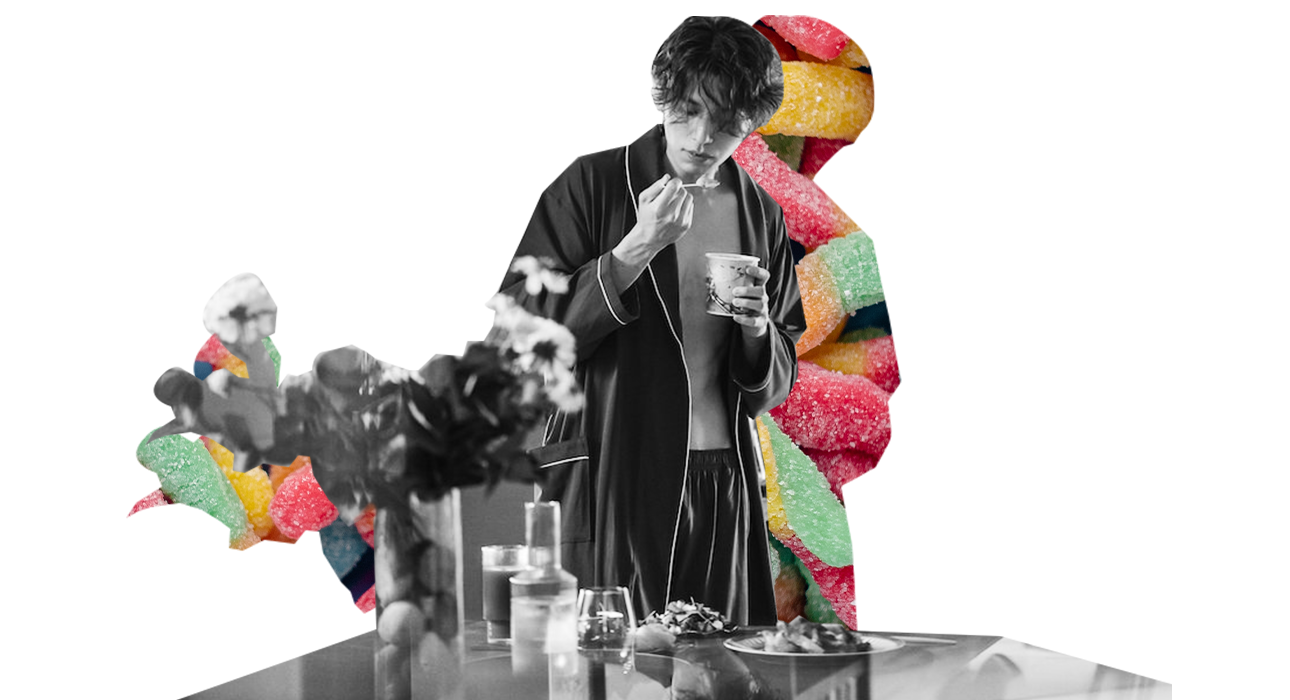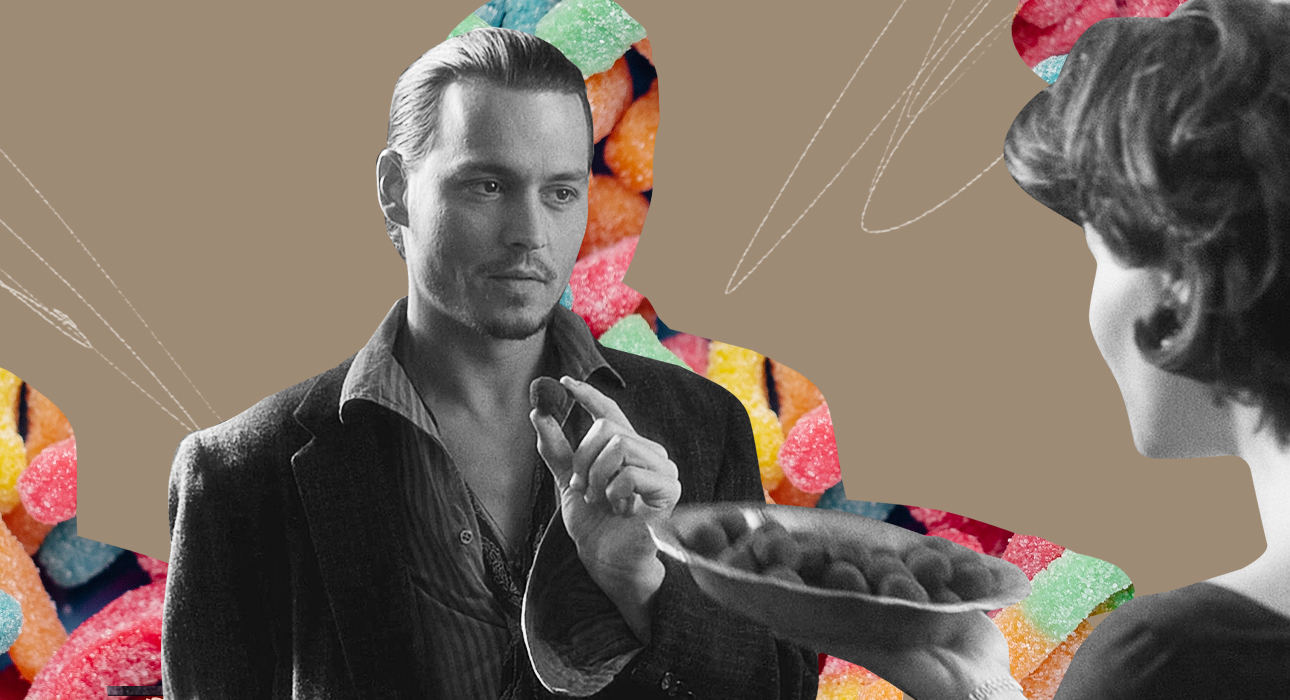Dear reader, we present to you our beauty columnist Inessa Tsarkova!
Inessa is an active nutritionist, gastroenterologist, therapist, naturopath and aromatherapist, health coach, integrative medicine doctor with a holistic approach. And now he will share with us his knowledge in the field of both physical and mental health, nutrition and much more.
In our last article we discussed meditation in detail, and today we will fight against harmful industrial sweets – why they are bad and which sweets to switch to.

Inessa Tsarkova
Our love for sweets comes from childhood (when we were pampered, rewarded, reassured, shown love with sweets) and from the depths of our subconscious (where our body’s “use instructions” are written). Both are associated with the stimulation of neurotransmitters – powerful substances that “encourage” our brain with a feeling of joy, happiness and calm. After all, sugar (or more accurately, glucose) is the main source of energy for our cells. There is also a “reserve” fuel option – ketones produced by the liver from fats (for example, when fasting, during intense and prolonged physical activity, or when following a ketogenic diet, eating primarily fats and proteins).
And this is exactly how nature warned our ancestors (by producing hormones of happiness), when creating the human body, forcing them to look for and eat their own “species food” – fruits and plant seeds containing a large amount of sugar and fat. After all, these products contain the maximum amount of potential energy for humans. This is why high-calorie, fatty and sweet foods (e.g. chocolate, cheese, sweet pastries) are the most powerful “food medicines”. It is also interesting that 90% of serotonin (the joy hormone) is synthesized not in the brain, but in the intestines, by microbes that happily feed on undigested carbohydrates and fats. For this reason, it is very important that our gastrointestinal system digests and assimilates what we eat well, leaving only raw plant fiber and beneficial microbes to our friends. This is hampered by modern complex product combinations (very different from natural options).
Such combinations and some of the substances that make up modern desserts do not exist in nature: refined carbohydrates (wheat flour and starch), animal proteins (eggs or egg powder), unhealthy trans fats (margarine, palm oil) and many artificial additives. (dyes, sweeteners, preservatives and others). Their assimilation often requires, firstly, enzymes that work under different pH conditions, and secondly, the body becomes “confused”, as it cannot properly digest such a complex mixture of unnatural composition. A special system of receptors (it is supposed to determine what we eat and what enzymes are needed) “freezes” without absolutely understanding what kind of product it is.
The main source of sugar in nature, as we said above, was honey, as well as sweet fruits, berries and plant roots. But, unfortunately, modern sweets are very different from natural sources of sugar in composition and properties.
Harmful substances in industrial desserts and their effects on the body

refined sugar
Frequent use leads to the development of insulin resistance (reduced sensitivity of cell receptors to insulin) and, ultimately, to the development of diabetes, obesity and atherosclerosis. The fact is that insulin is produced by the pancreas in response to the appearance of sugar (glucose) in the blood. It “hits” the cell, the cell “opens” and “lets in” the sugar from which it produces energy. If the cell does not need energy or if insulin “knocks on the door” too often, the cell stops “opening the door” for it. Then the sugar remains in the bloodstream and begins to damage the walls of the blood vessels (as a result, atherosclerosis develops). But the pancreas produces more insulin, which “converts” all the excess sugar floating in the blood into fat cells and stores it in fat stores (subcutaneous fatty tissue and internal organs). In addition, excess sugar is happily eaten by parasites and pathogenic microbes, which begin to multiply rapidly and disrupt the functioning of the body, leading to poisoning, allergies, dermatitis and frequent and serious infectious diseases. When sugar enters the body in large amounts, it also leads to protein glycation and rapid aging of the skin.
refined wheat flour
Poorly digested wheat flour “clogs” the intestinal villi, and the lectins it contains cause inflammation of the intestinal wall and the development of “leaky gut” syndrome. This leads to the development of chronic inflammation in tissues (including arthritis). When undigested foreign proteins begin to leak into the blood through “holes” in the intestines, serious autoimmune diseases are triggered (when the immune system attacks and destroys the body’s own cells). In addition, this type of flour is a product with a high glycemic index. This means that the same sugar is formed quickly and in large quantities and absorbed into the blood with the same results.
artificial additives
Various “E-shki” (preservatives, dyes, flavors, flavor enhancers, leavening agents and thickening agents), including trans fats (added margarine, palm oil, oxidized oils formed during heat treatment), are perhaps the most harmful substances in our diet. Because the body is not familiar with these chemical molecules, it does not know how to use them and cannot use them. These molecules try to integrate into biochemical reactions, disrupting their smooth flow, straining our liver and taking away too much energy, resources, vitamins and antioxidants from the body.
As a result, cells begin to be damaged, allergies, inflammation and organ damage develop, immunity decreases and cells turn into cancer.
Although manufacturers “assure” us that the amount of these substances in a single product is very small, over time they accumulate from different products, leading to serious undesirable consequences.
Both sugar, flour and especially artificial additives cause the acid-base balance to deteriorate. As a result, red blood cells stick together in the form of “columns of coins”, oxygen transfer to cells is impaired (and oxygen is also necessary for energy production and other vital processes), blood thickens (the risk of blood clots, strokes and heart attacks increases).
I think I scared you enough that you don’t want to eat industrial desserts. So how can you enjoy life and get endorphins then?
Of course, there are many reasons for joy (hobbies, art, sports, favorite things, communication with family and friends, humor, walks in nature, etc.). But sometimes in times of stress and overload we have so little strength that we just eat sweets and wait for it to “let go”.
Recipes for healthy desserts

To maintain your health and beauty, you just need to learn how to choose or prepare healthy desserts. Here are some quick and easy recipes for yummy desserts.
Sweet berries, fruits and natural, high-quality honey in natural form
A very delicious and healthy dessert can be made even from frozen fruits and fruit purees. Or even simpler: cut different fruits, decorate with berries and pour nuts (or seeds) urbech, honey or melted high-quality (or better homemade) chocolate, sprinkle with nuts or seeds (for example, pumpkin, sunflower, flax, sesame) or in advance soaked chia seeds).
“Instant PP candies”
Remove the pits from the dates (you can also use properly dried apricots or prunes without sugar syrup and wax) and replace them with a prepared nut (raw almonds without shells or cashews (or other prepared nuts). You can also blend them in a blender until smooth. you can grind: dates (or other dried fruits), prepared nuts or seeds (or their cake), coconut oil, add a few tablespoons of Urbech from nuts or seeds, favorite spices Make balls, with ground flaxseeds, pine nuts, pumpkin seeds or natural cocoa powder roll it up and put it in the refrigerator for 15 minutes.
PP candies “Solnyshko”
Pour 100g of dried mango with warm water to soften for 30 minutes. After that, drain the water and grind in a blender (it is better to leave small pieces of mango), add 100 g of coconut flakes, a small pinch of pink Himalayan salt, 2 tbsp. l. coconut cream (or coconut milk, but you can do without it), 2-3 tbsp. l. honey (or erythrol) or 1 tbsp. l. stevia syrup (or Jerusalem artichoke), 1 tsp. lemon zest, 2-3 teaspoons. lemon juice. Mix everything well until smooth. You can add 2-3 drops of lemon and vanilla essential oils (choose CPTG certified and food grade certified oils). Form them into balls and put them in the refrigerator. Or you can eat it immediately.
sweet vegetables
Bake pumpkin, beets and sweet potatoes in the oven, drizzle with honey and garnish with nuts, seeds, berries or dried fruit.
PP candies “Raffaello”
You will need: 80g coconut milk powder, 20g coconut oil, 60g coconut urbecha, 40g Jerusalem artichoke syrup, 40g water. You need to melt the coconut oil (for example, in a water bath), add all the ingredients into it and roll the coconut flakes. You can put the hazelnuts you prepared in the middle of the candy.
PP chocolate
You need to mix the following ingredients until smooth: 200 ml of pre-melted cocoa bean butter, 3 tbsp. l. natural cocoa powder or carob (can be halved), 1/2 tbsp. l. Ceylon cinnamon (much healthier than the cheaper cassia cassia, often referred to as cinnamon), 1/4 tsp. pink Himalayan salt or a teaspoon of ground seaweed thallus.
Filling: Sunflower seeds, pumpkin seeds, sesame seeds, flaxseeds or any ready-made nuts or suitable dried fruits, dried in the shade without preservatives or sugar syrup. Adding ingredients like fresh pomegranate fruits, dried wakame seaweed or even shiitake mushrooms will be very tasty and healthy. You can also add your favorite spices (I use barberry, coriander, turmeric, allspice, cloves). Then let the mixture cool down a little and pour it into the molds and keep it in the refrigerator overnight.
Banana-strawberry ice cream
You will need 4 ripe bananas, 400 g of strawberries, royal dates (3 pieces) or Persian dates (6 pieces). Peel the bananas, cut them and put them in the freezer for a few hours or overnight (I always recommend storing ripe bananas in the freezer; then you won’t have to waste time freezing them). After the banana is frozen, put it in a blender, add frozen or fresh strawberries, pitted dates. Whisk and pour into moulds, then put in the freezer for two hours – voila! If there is no special mold, you can use plastic cups and toothpicks. To make the ice cream richer, you can add coconut cream or soaked and ground cashews.
When and how much is it better to eat PP sweets?
It is recommended to consume desserts in the first half of the day (before 17:00) and preferably as a separate meal. Ideally 30-40 minutes before training or physical activity or 2.5 hours after meals. You can also take it 20-30 minutes before meals. Eat slowly and with pleasure. It is important to ensure that the number of such desserts is not too large. Consisting of natural ingredients and containing many vitamins, antioxidants, minerals, healthy fats and amino acids, they remain a healthier, yet high-calorie food source.
You can add fruits, berries, honey, nuts or seeds to any dish to increase taste, nutrient density and create aesthetic integrity, but do not exceed 10% of the total volume. For example, if the portion weight is 250 g (for example, millet porridge), then no more than 25 g of such toppings can be added.
Source: People Talk
Errol Villanueva is an author and lifestyle journalist who writes for The Fashion Vibes. With a passion for exploring the latest trends in fashion, food, travel, and wellness, Errol’s articles are a must-read for anyone interested in living a stylish and fulfilling life.





